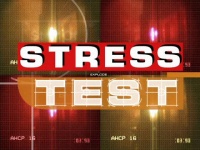Stress Test Results Show 10 of 19 Large U.S. Banks Need Additional Capital Buffer

Get Alerts BAC Hot Sheet
Price: $38.32 --0%
Overall Analyst Rating:
NEUTRAL (= Flat)
Dividend Yield: 2.8%
Revenue Growth %: -1.9%
Overall Analyst Rating:
NEUTRAL (= Flat)
Dividend Yield: 2.8%
Revenue Growth %: -1.9%
Join SI Premium – FREE
As expected, U.S. regulators announced the results of the bank stress tests which was performed on 19 of the nation's top banks. Results from the tests showed that 10 of the 19 banks need an additional $75 billion in total capital buffer to cover future losses under an adverse scenario while maintaining Tier 1 capital in excess of 6% and Tier 1 Common capital in excess of 4%.
In addition, results of the tests suggest that if the economy were to track the more adverse scenario, losses at the 19 firms during 2009 and 2010 could be $600 billion. The bulk of the estimated losses –
approximately $455 billion – come from losses on accrual loan portfolios, particularly from residential mortgages and other consumer‐related loans.
The cumulative two-year loss rate indicated by the banks included losses on first lien mortgages of 5%-6% under the baseline economic scenario and losses of 7%-8.5% under the more adverse economic scenario. Losses seen on credit cards are 12%-17% under the baseline economic scenario and 18%-20% under the more adverse economic scenario. (More on loss assumptions in Table 1 below).
10 Banks That Need To Boost Capital Buffer:
A number of the capital inadequate banks announced their plans to address the capital buffer following the results of the stress tests:
In addition, results of the tests suggest that if the economy were to track the more adverse scenario, losses at the 19 firms during 2009 and 2010 could be $600 billion. The bulk of the estimated losses –
approximately $455 billion – come from losses on accrual loan portfolios, particularly from residential mortgages and other consumer‐related loans.
The cumulative two-year loss rate indicated by the banks included losses on first lien mortgages of 5%-6% under the baseline economic scenario and losses of 7%-8.5% under the more adverse economic scenario. Losses seen on credit cards are 12%-17% under the baseline economic scenario and 18%-20% under the more adverse economic scenario. (More on loss assumptions in Table 1 below).
10 Banks That Need To Boost Capital Buffer:
- Bank of America (NYSE: BAC) - $33.9B
- Citigroup (NYSE: C) $5.5 billion
- Fifth Third (Nasdaq: FITB) $1.1B
- GMAC (NYSE: GM) $11.5B
- KeyCorp (NYSE: KEY) $1.8B
- Morgan Stanley (NYSE: MS) $1.8B
- PNC (NYSE: PNC) $0.6B
- Regions Financial (NYSE: RF) $2.5B
- SunTrust Bank (NYSE: STI) $2.2B
- Wells Fargo (NYSE: WFC) $13.7B
- Ameican Express (NYSE: AXP)
- BB&T Capital (NYSE: BBT)
- Bank of New York Mellon (NYSE: BK)
- Capital One (NYSE: COF)
- Goldman Sachs (NYSE: GS)
- JPMorgan (NYSE: JPM)
- MetLife (NYSE: MET)
- State Street (NYSE: STT)
- US Bancorp (NYSE: USB)
A number of the capital inadequate banks announced their plans to address the capital buffer following the results of the stress tests:
- Bank of America (NYSE: BAC), which has the largest shortfall at $33.9 billion, said it will not need any new government money and could increase the Tier 1 common ratio in a number of way including selling common stock and/or converting existing privately held preferred stock into common shares. Bank of America has already announced it will sell First Republic Bank and is considering the sale of several other business units including Columbia Management. It may also consider several joint ventures.
- Wells Fargo (NYSE: WFC), which has a shortfall of $13.7 billion, plans to issue $6 billion in common stock and said converting preferred shares to common is a "contingency."
- Morgan Stanley (NYSE: MS) plans to issue $2 billion in common stock and $3 billion in non-FDIC debt, more than covering their $1.8 billion capital need.
- Citigroup (NYSE: C) will exchange an additional $5.5 billion of preferred shares into common to cover their shortfall.
- Fifth Third (Nasdaq: FITB) said they will augment their common equity the needed $1.1 billion in the next six months.
- KeyCorp (NYSE: KEY) said if they are unable to raise the required common capital, they $2.5 billion in TARP preferred capital which they said they could convert into common.
- PNC (NYSE: PNC) said it will cover its $600 million shortfall through a combination of growth in retained earnings and other capital market alternatives.
- Regions Financial (NYSE: RF) said it will seek to increase capital through liability management strategies and the issuance of common equity of securities convertible into common equity to satisfy their $2.5 billion shortfall.
- SunTrust Bank (NYSE: STI) has yet to comment on how it will cover its $2.2 billion shortfall.

You May Also Be Interested In
- Fisker (FSR) files form 10-K, sees more job cuts, reiterates going concern doubts
- IBM tumbles on soft Q1 revenue; announces HashiCorp $6.4bn acquisition
- Meta Platforms Inc. (META) PT Lowered to $500 at Goldman Sachs, 'Management Track Record of Execution Leaves Us Long-Term Constructive'
Create E-mail Alert Related Categories
Hot List, Insiders' Blog, Trader TalkRelated Entities
JPMorgan, Goldman Sachs, Citi, Morgan Stanley, BB&T Capital Markets, FDIC, GMACSign up for StreetInsider Free!
Receive full access to all new and archived articles, unlimited portfolio tracking, e-mail alerts, custom newswires and RSS feeds - and more!



 Tweet
Tweet Share
Share